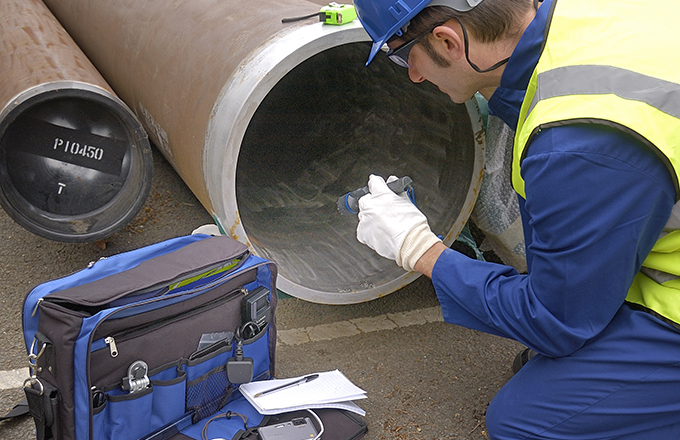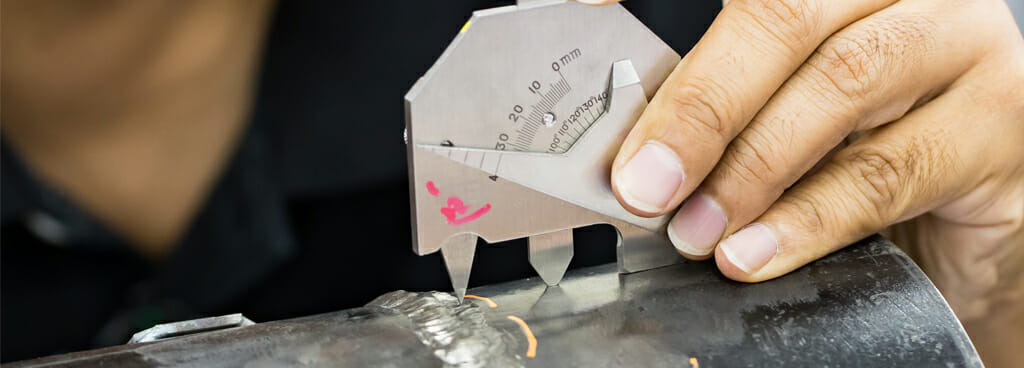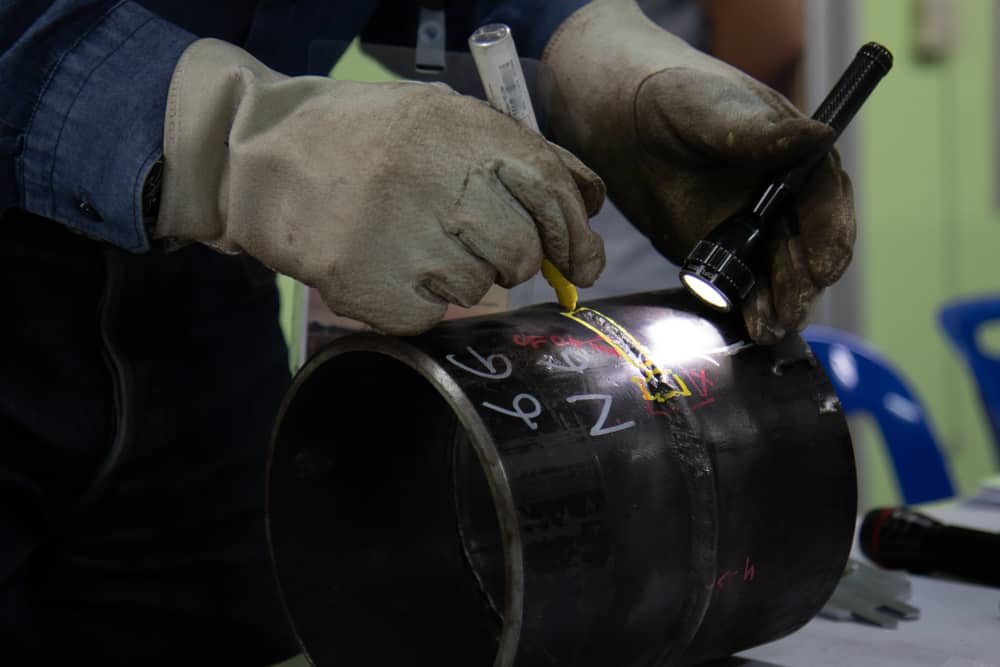A Comprehensive Overview to Understanding Exactly How Welding Inspection Works: Strategies, Standards, and Finest Practices for Top Quality Assurance in Metal Construction
Comprehending the complexities of welding evaluation is essential for maintaining the honesty of steel fabrication. Implementing ideal methods can considerably boost high quality assurance actions. The landscape of welding assessment is not without its challenges.
Relevance of Welding Assessment
Although welding is a vital process in different industries, its honesty directly affects the safety and efficiency of structures and elements. Effective welding assessment is important for recognizing problems that can compromise the high quality and resilience of bonded joints. This procedure guarantees adherence to developed requirements and standards, which are essential for maintaining structural honesty and functional dependability.
Welding assessment offers multiple functions, consisting of verifying that the welding process has been implemented correctly, evaluating the high quality of products used, and confirming that the completed item fulfills governing and market criteria (Houston Welding Inspection). With strenuous evaluation, potential issues such as porosity, cracks, and insufficient blend can be identified early, minimizing and stopping expensive repair services security dangers
In addition, regular welding inspections foster confidence among stakeholders, consisting of designers, clients, and regulative bodies, by showing a commitment to quality control. The importance of welding inspection can not be overemphasized; it is indispensable not just for conformity with legal requirements but also for boosting the total performance of welded frameworks. Eventually, a robust welding inspection program is an aggressive procedure that safeguards against failures, making certain the long life and reliability of welded parts in their desired applications.
Typical Welding Evaluation Techniques

Aesthetic examination is the initial line of protection, permitting assessors to recognize surface area issues such as splits, damages, or insufficient combination. Radiographic testing utilizes X-rays or gamma rays to reveal internal flaws, making it perfect for complex welds. Ultrasonic testing uses high-frequency audio waves to identify subsurface issues, supplying exact measurements of weld integrity.
Magnetic particle screening works for ferromagnetic materials, highlighting surface and near-surface suspensions when particles are put on an electromagnetic field. On the other hand, dye penetrant screening utilizes a liquid color to expose surface-breaking problems, ensuring that also the smallest flaws are detected.
Each strategy has its constraints and staminas, often demanding a combination of approaches for detailed assessment - Houston Welding Inspection. By using these evaluation strategies, quality control in metal fabrication is accomplished, ensuring that bonded structures satisfy safety and performance criteria
Market Requirements for Welding


The American Welding Society (AWS) and the American National Standards Institute (ANSI) are 2 noticeable companies that develop welding requirements. AWS D1.1, as an example, outlines the requirements for welding steel frameworks, while AWS D1.2 concentrates on aluminum. Internationally, the ISO 3834 basic addresses quality needs for combination welding, offering a framework relevant throughout national boundaries.

Ideal Practices for Quality Assurance
Quality control in welding is vital to attaining durable and safe buildings. Applying ideal techniques ensures that every weld satisfies the required specifications and standards. First, establishing a comprehensive quality management system (QMS) tailored to the specific welding project is essential. This QMS must define duties, duties, and treatments to alleviate dangers and enhance liability.
Normal training and accreditation of welding personnel are crucial for maintaining a knowledgeable workforce. Continual education on the most up to date welding methods and modern technologies guarantees that assessors and welders are well-informed concerning current requirements and techniques.
Additionally, performing pre-weld inspections to examine products and equipment can avoid issues before they happen. Houston Welding Inspection. Throughout the welding procedure, real-time monitoring and paperwork of welding criteria aid identify variances immediately. Post-weld evaluations must entail thorough evaluations utilizing non-destructive screening (NDT) approaches to make certain the integrity of the welds
Additionally, preserving clear interaction among group participants promotes a culture of top quality. Normal audits and reviews of the welding process help identify areas for improvement. By adhering to these best practices, organizations can achieve optimal quality control, inevitably leading to enhanced safety and security and efficiency in steel manufacture jobs.
Difficulties in Welding Assessment
Although welding assessment is important her comment is here for making sure structural integrity, it presents a selection of obstacles that can complicate the assessment procedure. One substantial difficulty is the variability in welding techniques and products utilized, which can affect the uniformity of weld top quality. Different welders might use varying methods, bring about inconsistencies that inspectors need to assess and identify.
An additional challenge entails the detection of defects. Non-destructive screening (NDT) methods, such as radiographic and ultrasonic testing, can be intricate and need skilled professionals to translate outcomes precisely. Incorrect positives or negatives can happen, potentially leading to costly rework or jeopardized safety and security.
Furthermore, the visibility of environmental aspects, such as temperature and humidity, can affect the integrity of welds and the efficiency of inspection methods. Assessors must you could try these out likewise browse the regulatory landscape, making sure conformity with industry requirements, which can differ by territory and application.
Conclusion
Finally, welding examination plays a vital function in making sure the stability and security of steel manufacture. Employing a variety of assessment strategies, sticking to established industry requirements, and carrying out reliable top quality management methods jointly improve the integrity of bonded frameworks. Regardless of the obstacles encountered in the inspection process, a dedication to continual improvement and adherence to best practices can significantly bolster the quality control structure, cultivating better self-confidence amongst stakeholders in the welding market.
Efficient welding examination is essential for identifying issues that can endanger the high quality and toughness of welded joints.Furthermore, consistent welding inspections foster self-confidence amongst stakeholders, including engineers, customers, and regulative bodies, by demonstrating a dedication to top quality assurance.The American Welding Society (AWS) and the American National Requirement Institute (ANSI) are two popular companies that develop welding standards. Throughout the welding procedure, real-time monitoring and documents Clicking Here of welding specifications aid determine disparities instantly. Regardless of the difficulties faced in the examination process, a dedication to constant improvement and adherence to finest practices can dramatically reinforce the top quality assurance structure, fostering better confidence amongst stakeholders in the welding industry.
Comments on “Expert Houston Welding Inspection to Fulfill Sector Regulations”